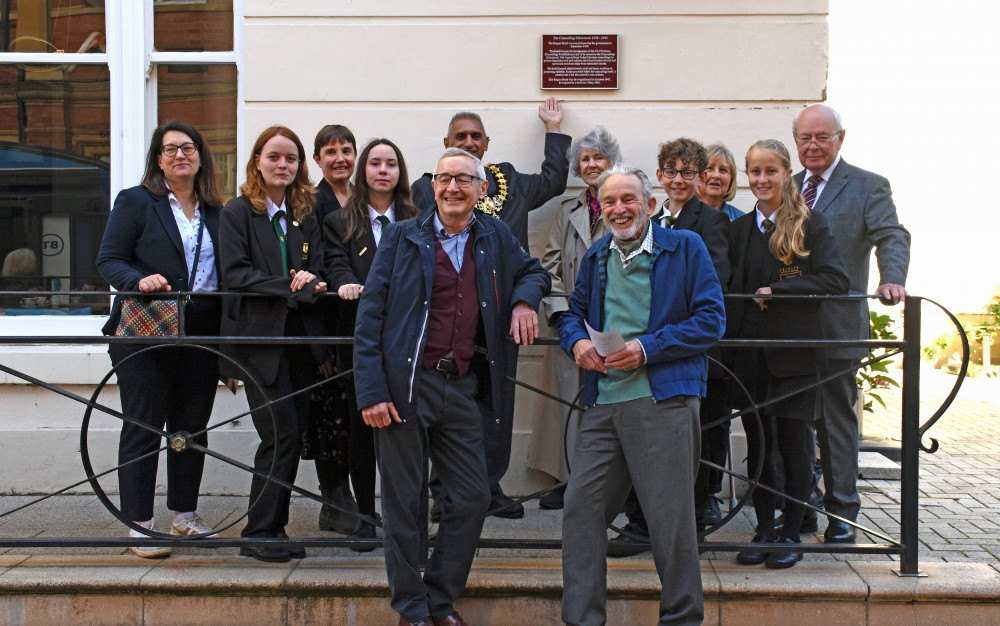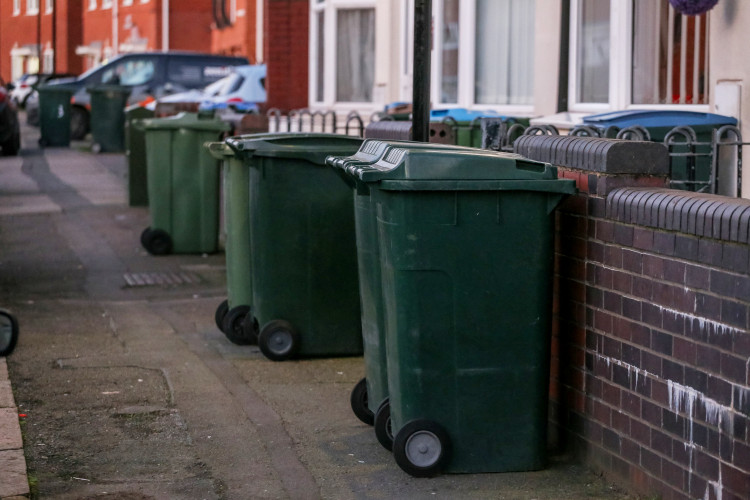Historic tribute: Unveiling of WWII camouflage plaque at former Regent Hotel in Leamington
By Nadia Sayed 25th Sep 2025
By Nadia Sayed 25th Sep 2025

A Special Interest plaque on the wall of the former Regent Hotel (Livery Street side) in Leamington has been unveiled.
Cllr Ruggy Singh, the town mayor, unveiled the plaque on Wednesday 24 September, which commemorates the site and work of the Camoufleurs during the Second World War.
In 1939, the Civil Defence Camouflage Establishment (CDCE) relocated from London to Leamington to avoid anticipated German air raids on the capital.
Their task was to create camouflage to help protect important civilian installations, such as factories, power stations and airfields, against aerial attacks.
The Mayor, Cllr Ruggy Singh, stated: "Each plaque we add to our town is important; it keeps the history of Royal Leamington Spa alive and sparks conversation among those who pass by.
"I hope that this new plaque will encourage residents and visitors alike to learn more about our town, a town they may have lived in for years but whose past they might not yet fully know.
"I would like to extend a big thank you to The Leamington Blue Plaque Group, which has been tirelessly researching and installing plaques across our town for some years now."
By December 1940, Leamington was home to 84 technical officers, supported by subordinate staff of 20 and a clerical staff of 23.
The camouflage staff worked in several buildings in Leamington that were requisitioned for wartime use under the Emergency Powers (Defence) Act 1939.
Notable buildings included the former roller-skating rink by the River Leam (now the Loft Theatre), which was used to develop civic camouflage, and the municipal art gallery on Avenue Road (now a private home), which was utilised for naval camouflage.
The Regent Hotel has become a central hub.
The Chief Camouflage Officer, Lancelot Glasson, had his office above the entrance of the hotel, and other staff worked elsewhere in the building on different types of camouflage.
On the first floor, painted Tom Monnington led a team designing camouflage for civilian airfields. On the top floor, the smoke sub-section devised experiments using thick smoke to obscure targets, while the horticultural sub-section advised on the use of tress and grasses, as tools for disguise.
The hotel was also reportedly used for practical experiments, and many camouflage schemes were designed there. The Regent Hotel sustained little damage during the six main German air raids on Leamington, which occurred between August 1940 and July 2942.
The Regent Hotel was de-requisitioned in 1947 and reopened as a hotel on 1st of May 19848.
The event on 24 September was attended by representatives from various Local groups, including Lillington and Leamington History Society, the Leamington Society, the Literacy Society, and the Sydenham History Group, as well as representatives from FLAG and the Art Gallery.
Jeff Watkin, a well-known local historian and author of the recently published Concealment & Deception: The Art of the Camoufleurs of Leamington Spa 1939 -1945, was also present.
The plaque joins the exciting Leamington blue plaque trail as the 42nd plaque in the town.
Find out more about Royal Leamington Spa Commemorative plaque scheme here.
CHECK OUT OUR Jobs Section HERE!
leamington vacancies updated hourly!
Click here to see more: leamington jobs
Share:















